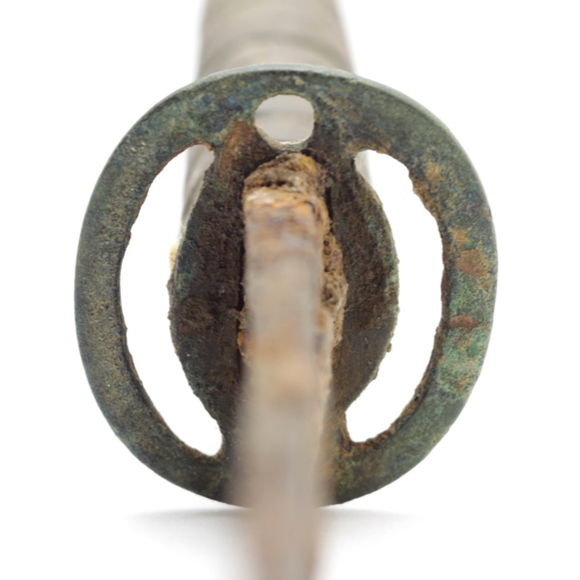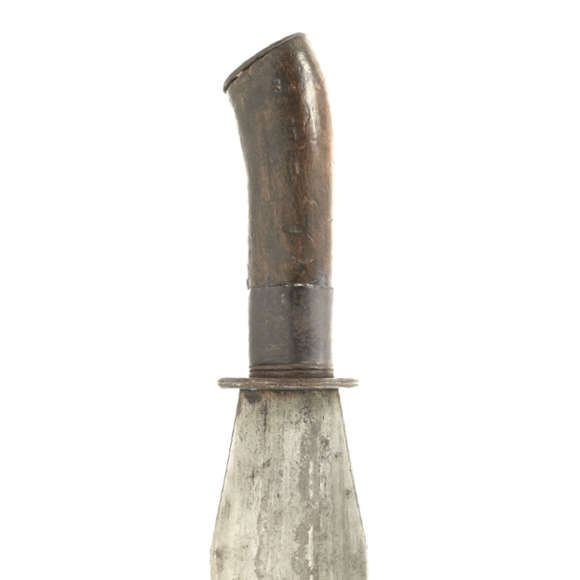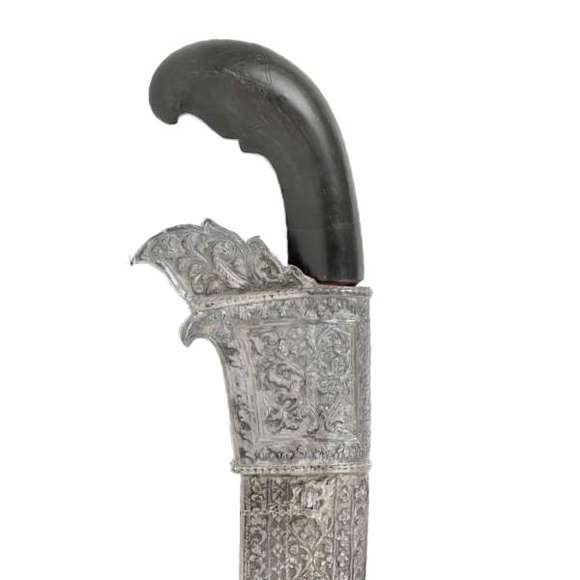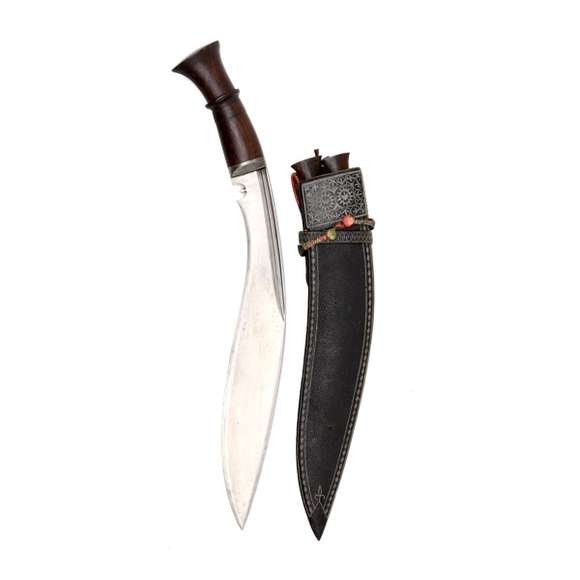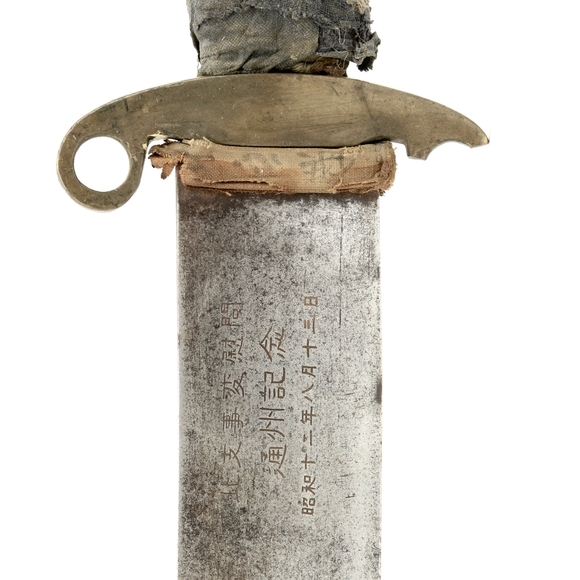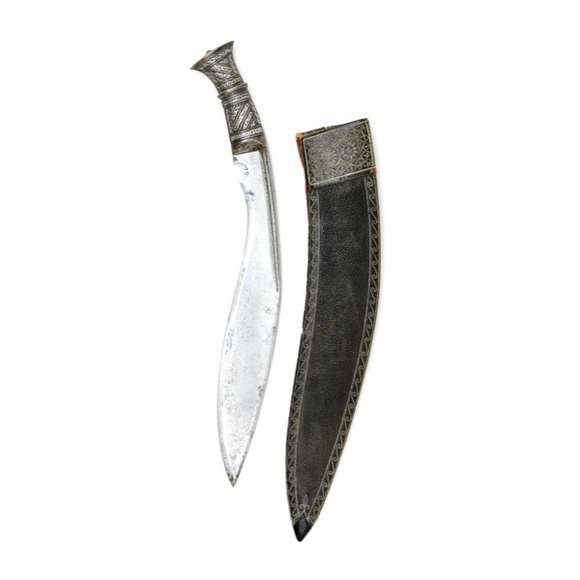In excavated condition, with copper alloy hilt.

Sheathed 82.5 cm
Sword 77.3 cm
56.4 cm
Base 7.8 mm
Middle 4.3 mm
Tip 2.7 mm
Base 24 mm
Middle 26 mm
Tip 33.5 mm
801 grams
6.8 cm from hilt
Iron, steel, wood, cotton, copper alloy, silver, gold, niello, silk, horse hair, lacquer
Siam (Thailand)
Around the reign of Rama V
(1868-1910 AD)
A British private collection
An American private collection
Description
The straight blade gently widens in profile, the spine makes a sudden downward turn near the tip. This geometry makes a sword that cuts well, even with its very tip, at the expense of thrusting ability. Clever distal tapering of the thickness makes for a lively handling piece. Swords of this type were worn by Thai royal guards.
Gold inlay
The blade is inlaid on both sides with gold, which appears to have been poured hot into pre-cut grooves. There are some "bubbles" in the gold. They are inclusions of a different gold-colored alloy that appeared to have shrunk less than the gold, creating microscopic spaces as the molten gold around them solidified.

Some of the inclusions are still in place, others fell out over time. I managed to pry one loose with a scalpel. The sword would have left the shop with the gold intact, and with age, some of the inclusions fell out.

One of the inclusions at the tip of my scalpel under high magnification.
To the right of the tip, an inclusion still in place.
Hilt & scabbard
The hilt is made out of wood with cast gilt copper alloy mounts. The grip section is wrapped with braided horse hair, and lacquered.
The scabbard is made of two halves of wood, covered with thick blue "maung" cotton. It has three gilded silver niello (thom thong) mounts, and two gilt copper alloy bands holding a silk carrying strap used to carry it over the shoulder.
The mounts are decorated in classic gold niello geometric floral patterns. The scabbard endpiece is decorated with an elephant.
Comparable examples
A very similar sword, but with a green cotton-covered scabbard, is currently on display in the arms hall of the National Museum Bangkok.1 Another was presented in 1957 by General Thanom Kittikachorn to General Nathan F. Twining, then Chairman of the Joint Chiefs of Staff, America's highest-ranking military officer.2
Provenance
The sword originally came from a British diplomat who served in Thailand during the reign of Chulalongkorn (Rama V), which lasted from 1868 to 1910. It was obtained by a British dealer who sold it to an American private collector, who traded it with another collector/dealer who sold it to me.
Notes
1. See a photo by Gary Todd on Flickr.
2. Auctioned at Heritage Auctions, 2010, lot 52516.

















An understated, elegant khukuri of substantial proportions with fine layered blade.
With markings attributing it to the Tongzhou incident and a Japanese surrender tag.
With iron, silver overlaid hilt. Its associated scabbard features fine quillwork.

